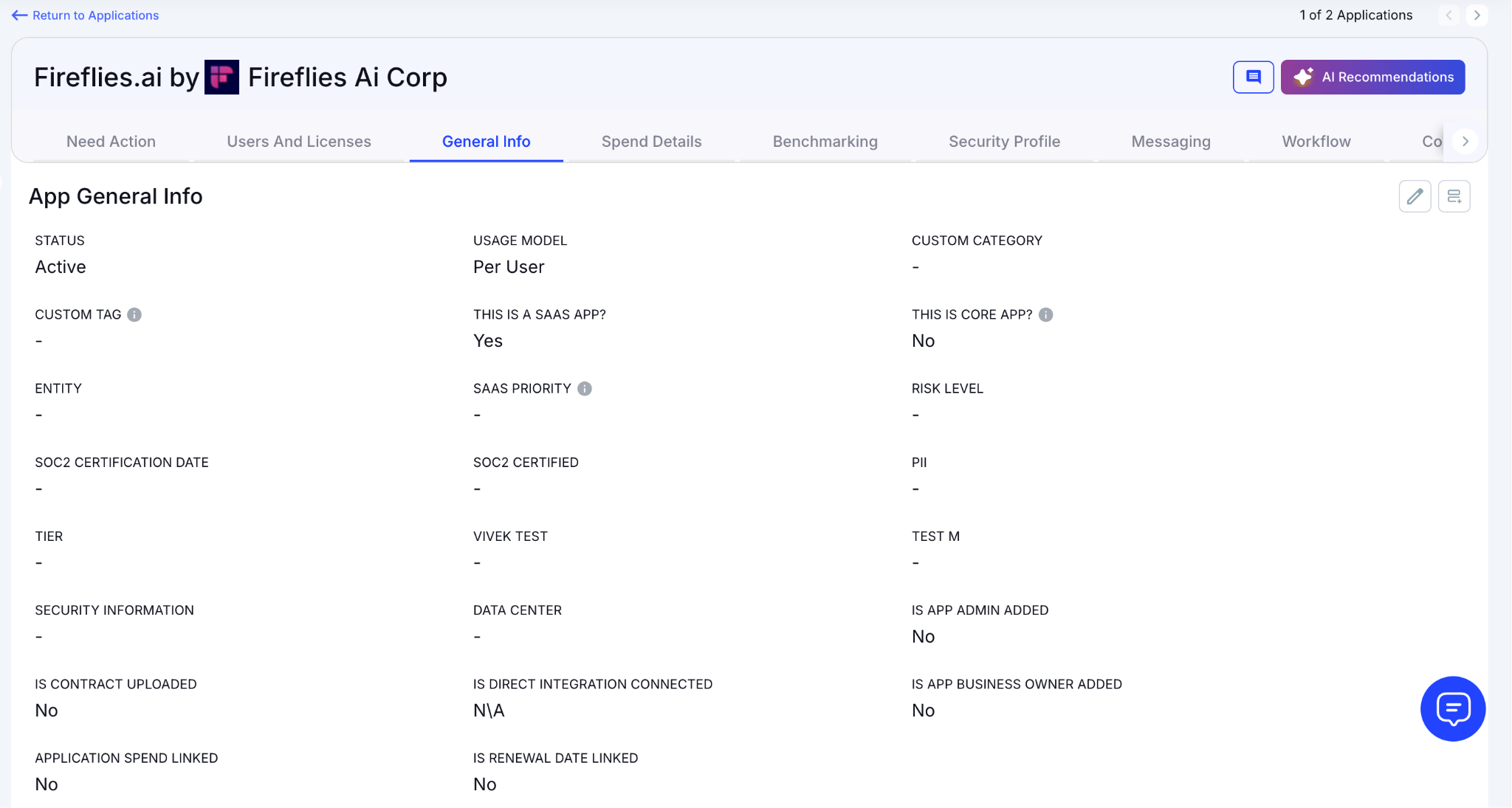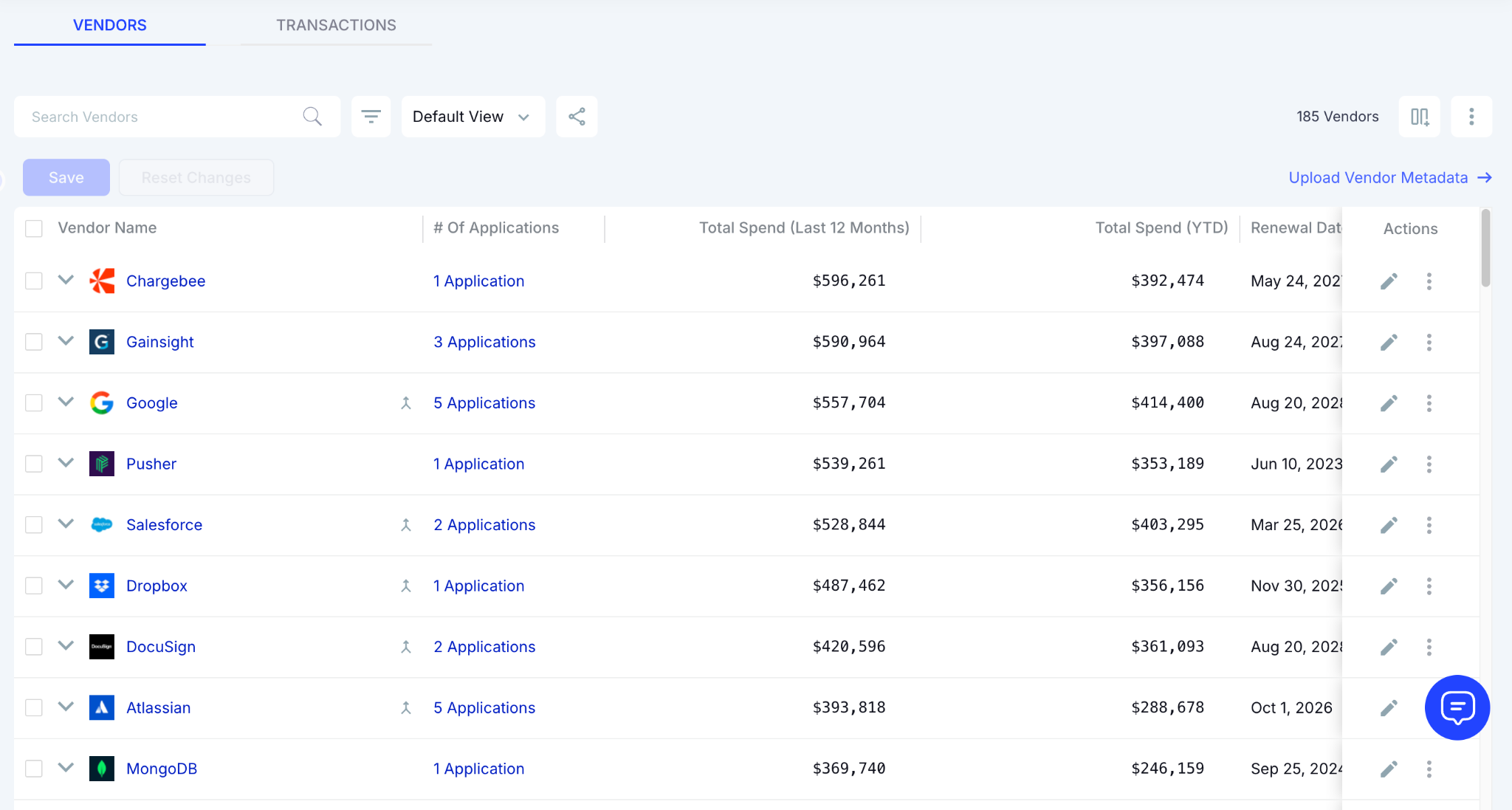HIPAA Compliance Checklist for 2025

You know that moment after a meeting when everyone says, “Fireflies will have it,” and then… nobody checks the transcript? It’s there, it’s detailed, but buried under folders of calls no one remembers naming.
Fireflies is brilliant for capturing what’s said. But keeping track of who’s using it, how often, and why you’re still paying for 40 seats when only 15 people host calls? That’s the part that gets messy fast, especially when you’re confused about Firefly.ai pricing plans.
Gartner found that almost 38% of collaboration tool licenses go unused every year, and meeting tools are usually the first on the chopping block. Not because they don’t work, but because no one’s watching the usage closely.
That’s where CloudEagle.ai quietly fixes the chaos. It connects the dots between Fireflies license management, real meeting activity, and renewals. So, when finance asks, “Do we need all these seats?”, you’ll actually have an answer that makes sense.
TL;DR
- Many teams record every meeting but rarely check transcripts. With no visibility, Fireflies licenses pile up unused, quietly draining budgets through auto-renewals.
- Multiple departments often create separate Fireflies accounts for the same meetings, leading to duplicate data, inflated bills, and hidden SaaS waste across teams.
- Shared logins and inactive users leave untracked access trails. This weakens audit readiness and exposes sensitive data, especially when permissions go unmonitored.
- It unifies all license, spend, and usage data in one dashboard. Automated syncs, alerts, and AI insights help IT and finance reclaim unused seats and prevent overspending.
- CloudEagle.ai handles renewals, benchmarks pricing, and reclaims idle licenses automatically, transforming Fireflies management from reactive cleanup to proactive SaaS governance.
Why Is Everyone Recording Meetings but No One Tracking Access?
You’ve seen it happen: one team starts recording a few client calls “for notes,” then suddenly every department’s doing it.
Sales wants every pitch documented and HR’s recording employee onboarding for “future hires.” Before you know it, the whole workspace sounds like a surveillance archive.
From the team’s perspective:
It feels productive, even responsible. “We’ll have everything on record,” someone says, half relieved. Everyone trusts that these recordings are helping collaboration, not realizing that access lists are quietly ballooning in the background.
From IT’s perspective:
Old folders stay open, new hires inherit permissions they don’t need, and ex-employees still have shared links buried in their inboxes. “It’s just meeting notes”, until someone finds a transcript with confidential Fireflies.ai pricing data floating in a public channel.
From finance’s perspective:
It’s one of those SaaS costs that hides in plain sight. Dozens of Fireflies licenses renew automatically, guest users quietly become paid accounts, and every department swears they “need” Fireflies. Nobody’s wrong, but nobody’s watching the SaaS spend management either.
In the end, it’s not that people forget to manage access but no one thinks they need to. Until one quiet day, a simple renewal or a misplaced transcript reminds everyone that convenience was never the same as control.
What Are the Hidden Costs of “Just One More Meeting”?
We’ve all said it: “Let’s just add a quick sync.” It feels harmless, maybe even productive. But each meeting has a cost beyond the calendar block. The more meetings recorded, the more data trails, permissions, and renewals pile on in the background.
1. Every Hour Transcribed Comes With A Price Tag
“Wait, did someone hit record?” That question has become the soundtrack of every meeting lately. Why risk missing a key insight, right? But multiply that by every team, every week, and suddenly, your meeting notes come with a monthly invoice.
- Marketing records brainstorms “just in case,” though the notes rarely get opened.
- Sales transcribes every demo because “AI summaries” sound helpful, even if no one reads them.
- Product keeps archives of syncs already logged in Jira or Notion.
- Support stores customer calls indefinitely, because deleting feels riskier than paying for storage.
According to Otter.ai’s report, enterprises spend an average of $6,280 annually on meeting transcription tools that see less than 30% actual reuse.
And yet, when finance asks, “Who’s using all these licenses?” The silence says it all.
- Finance teams see the total cost of Fireflies.ai pricing but not the usage.
- IT hesitates to delete recordings without a policy.
- Managers assume “someone’s tracking it.” No one is.
The irony? The very tools meant to save time are quietly billing you for keeping it.
2. Duplicated Workspaces Inflate Your Bill Without Notice
Picture this: product just launched a new feature, and marketing needs recordings for the campaign video. “Let’s make a clean workspace,” someone suggests.
A few days later, customer success creates another one “for tracking client calls better.” By the end of the week, you’ve got three Adobe Firefly pricing accounts, all storing the same meetings.
- Marketing’s Workspace: Neatly labeled clips for every product clip and testimonial.
- Customer Success: Client onboarding calls, many already saved in marketing’s library.
- Engineering: daily Standups and bug syncs, separate again “for focus.”
As Satya Nadella once said,
“It’s not about doing more things, but doing the right things well.”
That quote hits home here. The problem isn’t enthusiasm but duplicate apps. And when your company grows, so do those “temporary” setups, multiplying until the same meeting is paid for three times over.
3. Multiple Teams Record The Same Meetings Separately
It’s almost funny the first time you notice it. Sales records a client call “for insights.” Marketing records the same call “for messaging.” Product records it “to capture feedback.” Three recordings, three transcripts, all of the same 45-minute conversation, sitting in different places.
From inside the teams, it feels harmless. Everyone’s just doing their job, trying to stay informed. But someone in finance eventually spots three identical transcripts being billed under different departments. The laughter stops, and the spreadsheet argument begins.
Companies are already feeling this pain. Hostinger revealed that organizations waste roughly 30–38% of their SaaS spend on unused, duplicate, or unnecessary licenses and services. This means duplicate recordings like this aren’t just annoying, they’re literally costly.
Why Do Unused Fireflies Licenses Go Unnoticed for So Long?
Fireflies rarely waves a flag saying, “Hey, no one’s using this seat anymore.” So unused licenses slip through Adobe Firefly pricing renewal cycles unnoticed, month after month, silently burning through the budget. It’s just how modern SaaS sprawl sneaks past even the most diligent finance teams.
1. Fireflies Licenses Sit Idle Between Projects
It’s easy to forget about Fireflies once a project wraps up. The team finishes their sprints, recordings pile up, and everyone moves on to the next initiative. But those Fireflies licenses? They keep ticking.
- Project-Based Signups: Teams activate seats for short-term use, then never deactivate them.
- Inactive Users: Contributors who left the company still hold active access.
- Team Rotation: New projects mean new users, while old ones remain unmonitored.
- Auto-Renewal Traps: Fireflies renews without prompting detailed usage-based pricing checks.
Soon, finance gets billed for licenses that haven’t seen a transcript in months. It’s not a waste out of carelessness. In reality, no one’s assigned to own the cleanup.
- No Centralized View: IT doesn’t see idle seats across departments.
- Disconnected Workflows: Revoking access feels risky when recordings might still be needed.
- Overlapping Usage: Multiple licenses get renewed “just to be safe.”
According to Techrepublic, 44% of SaaS licenses go unused every billing cycle, yet they still auto-renew. Fireflies fits that pattern perfectly. Useful when active, invisible when idle.
2. Shared Accounts Break Visibility And Audit Trails
The sales shares a single Fireflies account for client calls. It’s convenient at first: one login, one transcript hub, no setup hassle. But a few weeks later, someone edits notes, another deletes a recording, and nobody can tell who did what.
Over in marketing, the same pattern repeats. A shared account becomes the “team” login, because individual invites feel unnecessary. But soon, multiple users are joining meetings under one name.
As Gartner notes, by 2026, 70% of organizations will fail audits due to poor identity controls, and shared SaaS accounts are a big reason why. The damage is lasting with broken accountability, data confusion, and a trail no one can confidently defend.
3. IT Can’t Tell Active Users From Occasional Guests
It’s rarely about negligence, but more about pace. Projects move fast, teams rotate, and in the blur of delivery, someone says, “Just give them access; we’ll clean it up later.” Except later never comes.
- Guest users stay on the roster after projects close.
- Temporary access become permanent by accident.
- Teams forget who actually still needs Fireflies.
A few billing cycles go by, and what started as flexibility turns into quiet waste. Each renewal feels justified because no one can confidently say who’s inactive.
- Reports blur real activity with background noise.
- Renewals roll over without question.
- The same idle accounts keep showing up month after month.
By then, the line between “active” and “abandoned” is invisible, and that’s exactly how unused Adobe Firefly pricing licenses stay funded indefinitely.
How Does CloudEagle.ai Step In To Bring Order to Fireflies Chaos?
Managing Fireflies licenses spread across several SSO portals, usage dashboards, and billing systems can quickly become chaotic. Traditional spreadsheets capture only the surface-level data, leaving a trail of unused or untracked Fireflies licenses that quietly inflate Fireflies.ai pricing.
This fragmented method often leads to excess spending, compliance issues, and lost opportunities to optimize SaaS usage and renewals.

CloudEagle.ai delivers a unified, real-time view of every Fireflies license and spend detail. It automates monitoring, usage analytics, and renewal workflows, transforming an inconsistent manual effort into a centralized, data-led process.
1. Direct Sync with the Fireflies Admin Console
Manually overseeing Fireflies licenses is tedious, error-prone, and time-consuming for IT teams. Building spreadsheets takes weeks, and by the time they’re ready, the data is already outdated. This leaves teams without an accurate snapshot of subscriptions, usage, or plan details.
Current Process
Most organizations depend on spreadsheets and disjointed tools to track renewals, license allocations, and user activity. This creates scattered data sources that quickly fall out of sync.
Pain Points
Manual updates and delayed entries lead to inconsistencies and blind spots in cloud based software license management tracking. IT and finance teams lack reliable, real-time visibility into license usage.

How We Do It
CloudEagle.ai aggregates spend, usage trends, and AI-extracted metadata across all connected systems in real time. Renewal dates, cost insights, and usage patterns appear together for quick, confident analysis.
Why We’re Better
Setup takes only a few days. With over 500 native integrations and automated metadata extraction, CloudEagle.ai ensures all license data stays consistent, verified, and continuously refreshed.
2. Real-Time Usage Insights and Shadow IT Detection
When governance is fragmented, Fireflies license usage can spiral out of control. Duplicate tools and shadow IT frequently go unnoticed, making it hard for IT teams to identify redundant apps across departments.
Current Process
Teams often buy duplicate tools using corporate cards or trial accounts that quietly convert to paid subscriptions. Identifying these overlaps manually is time-intensive and unreliable.
Pain Points
Shadow IT drives unnecessary Fireflies costs and increases SaaS security risks. Manual tracking rarely catches every duplicate or underused app.

How We Do It
CloudEagle.ai continuously scans connected systems to detect redundant or overlapping tools, using AI to monitor feature-level usage and immediately flag hidden apps.

Why We’re Better
Our AI compares tools by functionality, not just names. IT can automatically alert users, trigger workflows, or open ITSM tickets to reclaim Fireflies licenses and lower SaaS risk exposure.
3. License Management for Distributed Fireflies Licenses
Managing Fireflies licenses across departments can be overwhelming. Many teams still rely on spreadsheets while manually combining SSO logs, usage data, and contract details, resulting in incomplete and inconsistent tracking.
Current Process
Most companies monitor only core apps manually, merging data from IDPs, contracts, and usage reports. This slows updates and compromises reporting accuracy.
Pain Points
Unmonitored applications drive waste, and delayed license reassignments miss savings opportunities. Renewal management often lacks coordination and consistency.

How We Do It
CloudEagle.ai unifies license management into one central platform. Nightly syncs merge identity, contract, and usage data, giving full transparency across license allocation and usage.
Why We’re Better
Automated updates align active users with purchased seats and track usage at the feature level. Teams can filter by license tier to make informed, data-driven SaaS spend optimization decisions instantly.
4. Automated Recovery of Unused Licenses
Unused Fireflies licenses silently inflate costs, and most IT teams lack the bandwidth for routine reclamation. Manually reviewing activity and messaging users is tedious, repetitive, and rarely scaled.
Current Process
IT often sends ad hoc reminders to inactive users and manually adjusts spreadsheets, making the workflow slow and inconsistent.
Pain Points
Inactive seats stay assigned, increasing costs and access risks. Manual reclamation cannot keep pace with organizational growth.

How We Do It
CloudEagle.ai automates license reclamation end to end. It detects inactivity, notifies users, and reclaims or downgrades licenses automatically using real usage metrics.
Why We’re Better
Automations run through Okta or Microsoft AD on daily or weekly schedules. Licenses are reclaimed instantly, cutting waste, saving IT hours, and improving utilization rates.
5. Smarter Renewals Through License Cost Benchmarking
CloudEagle.ai empowers procurement teams with real-time benchmarking to negotiate better Fireflies renewal deals. Comparing contract terms to live market data ensures renewals reflect true pricing trends.
Current Process
Procurement typically relies on vendor quotes or old contract references. Limited market benchmarks lead to weaker negotiation leverage.
Pain Points
Lack of pricing visibility often results in inflated costs or unfavorable terms.

How We Do It
CloudEagle.ai provides live benchmark data, historical price patterns, and Fireflies-specific pricing insights, giving teams verified data for confident negotiation.
Why We’re Better
Insights are segmented by SKU, tier, and license volume, with negotiation tips built in. Teams enter renewal cycles with complete market clarity instead of vendor bias.
6. Proactive Renewal Management and Alerts
CloudEagle.ai streamlines renewal tracking by automating reminders, workflows, and approvals ahead of key contract milestones. This prevents accidental renewals and ensures predictable SaaS governance.
Current Process
Renewals are usually tracked in spreadsheets and endless email chains, causing delays and missed opportunities for vendor negotiation.
Pain Points
Missed renewal windows lead to wasted spend and last-minute renewals that weaken leverage.

How We Do It
CloudEagle.ai builds automated renewal calendars using AI-extracted contract data or 500+ integrations with tools like Ironclad, Zip, or Fireflies. Tasks trigger 90 days before notice periods for proactive action.
Why We’re Better
Alerts include usage analytics, price benchmarks, and alternative vendor insights. All approvals are tracked automatically, preventing oversights and ensuring data-backed decisions.
7. Centralized Dashboards for Vendor Oversight
CloudEagle.ai’s vendor-specific dashboards consolidate every Fireflies subscription into one visual workspace. Teams can track usage, renewals, and spending patterns with complete clarity.

These dashboards highlight underutilized licenses and overspending, making reclamation easy. They also visualize adoption trends, helping organizations proactively adjust license allocations to maximize ROI.
8. Simplified Access Requests for Fireflies
CloudEagle.ai streamlines how employees request Fireflies access. Users can request directly within the platform or via Slack, avoiding long email chains and manual approvals.

Managers can approve requests instantly, ensuring quick access and correct license assignment. Every request is logged for transparency and SaaS compliance, reducing admin work and improving accountability.
Conclusion
When you zoom out, none of this is about software. Fireflies was built to make meetings easier, but the licenses behind it deserve the same attention as the conversations it records.
The good news? Visibility fixes most of the waste. When teams can actually see who’s using what and when, the clean-up stops being a guessing game. It becomes maintenance, not damage control.
And that’s the shift CloudEagle.ai brings. It doesn’t just manage licenses, it keeps your Fireflies workspace honest, aligned, and cost-efficient, long after the meeting ends.
FAQs
1. Is Fireflies.ai free or paid?
Fireflies.ai offers both free and paid plans. The free plan includes limited transcription and note-taking, while paid tiers unlock advanced collaboration, integrations, and storage features.
2. Can Fireflies AI edit existing images?
No, Fireflies.ai can’t edit images. It focuses on meeting transcription, summarization, and note automation, not visual or image-based editing.
3. How much does Fireflies cost?
Fireflies’ paid plans start at around $10 per user per month, depending on your tier and billing cycle. Pricing may vary for enterprise users.
4. Is Fireflies.ai safe to use?
Yes. Fireflies.ai uses enterprise-grade encryption and complies with major security standards to protect meeting data and transcripts.
5. How do I remove Fireflies from my Gmail account?
You can revoke Fireflies’ access by going to your Google Account → Security → Third-party apps and removing Fireflies.ai from the connected apps list.

%201.svg)









.avif)




.avif)
.avif)




.png)









